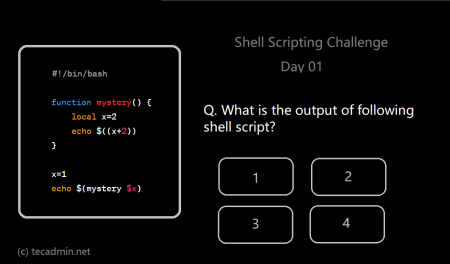As a system administrator, developer, or tech enthusiast, you will often find yourself interacting with Bash or another Unix shell. For tasks that may take a long time to execute, it’s helpful to provide a progress bar or some kind of indication to let you know that the script is still running and how far it has gotten. This article offers a hands-on approach to creating a progress bar using Bash scripting.
What is a Progress Bar?
A progress bar is a visual indicator used in the computing environment to show the progress of an operation. It’s a user-friendly way to represent the completion status of a process or task that might otherwise seem ambiguous or lengthy.
Why Use a Bash Progress Bar?
Implementing a progress bar in your Bash script offers multiple benefits:
- Feedback: It provides feedback that a process is still running and has not been halted or stuck.
- Estimation: It provides an estimated completion time, helping to manage expectations for how long a task will take.
- Usability: It improves the overall user experience by making long-running scripts more interactive and less monotonous.
Creating a Basic Progress Bar in Bash
Let’s start with a simple approach. Here’s a basic script that displays a progress bar:
1 2 3 4 5 6 7 8 | #!/bin/bash echo -ne '##### (33%)\r' sleep 1 echo -ne '############# (66%)\r' sleep 1 echo -ne '####################### (100%)\r' echo -ne '\n' |
This script uses the echo command to output the progress bar and the percentage of progress. The `-ne` options tell echo to not output a trailing newline and to interpret escape sequences.
The `\r` escape sequence returns the cursor to the beginning of the line, effectively allowing us to overwrite the line each time `echo` is called.
Advanced Bash Progress Bar
The previous example is quite basic and doesn’t dynamically update based on a process’s actual progress. Let’s create a more advanced progress bar that fills up over a specified duration.
1 2 3 4 5 6 7 8 9 10 11 12 13 14 15 16 17 18 19 20 21 22 23 24 | #!/bin/bash # Function to display the progress bar progress_bar() { local duration=${1} already_done() { for ((done=0; done<$1; done++)); do printf "#"; done } remaining() { for ((remain=$1; remain<$duration; remain++)); do printf " "; done } percentage() { printf "| %s%%" $(( (($1)*100)/($duration)*100/100 )); } clean_line() { printf "\r"; } for (( current_duration=1; current_duration<=$duration; current_duration++ )); do already_done $current_duration remaining $current_duration percentage $current_duration clean_line sleep 1 done clean_line } # Call the function with the specific duration progress_bar 10 |
This script defines a function `progress_bar` that takes a single argument: the total duration of the operation. It uses several helper functions to draw the progress bar, calculate the remaining time, and display the percentage of completion.
Conclusion
A progress bar is a useful tool for improving the usability of long-running Bash scripts. This article showed you how to create a simple progress bar and then build a more advanced, dynamic one.
Remember that these are just examples, and you can modify them according to your requirements. Adding a progress bar to your Bash scripts helps provide clear, visual feedback for your users and can enhance the overall user experience.
As you continue scripting in Bash, you’ll discover many other ways to provide user-friendly feedback during script execution. The progress bar is just one of the many powerful tools you have at your disposal when it comes to interactive Bash scripting. Happy scripting!



